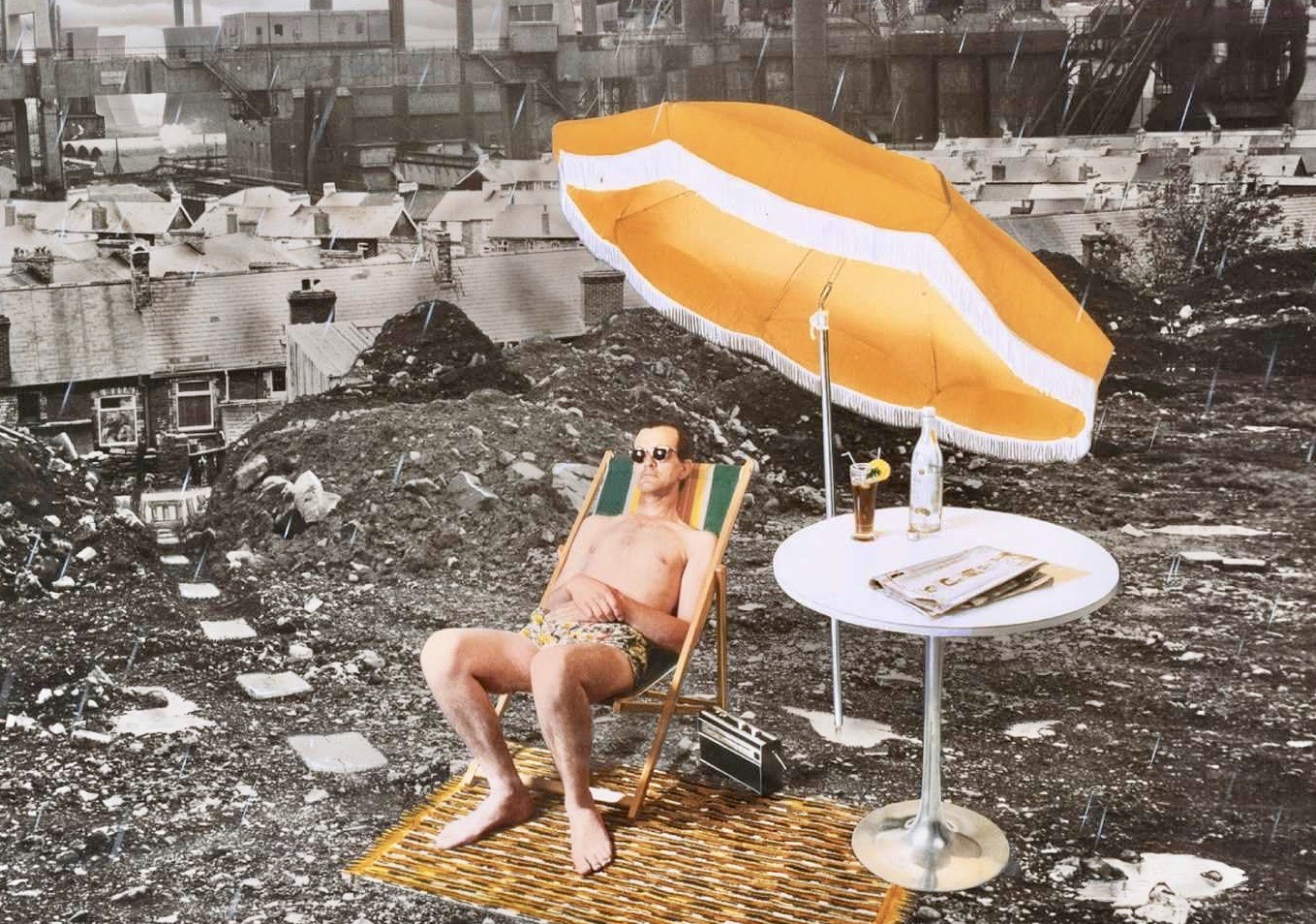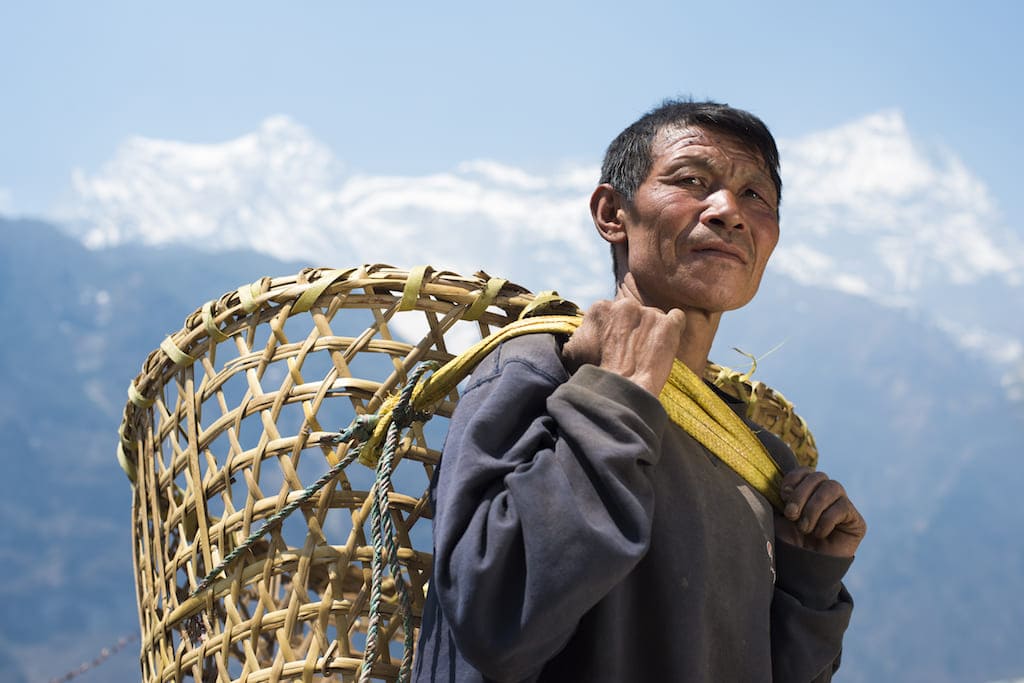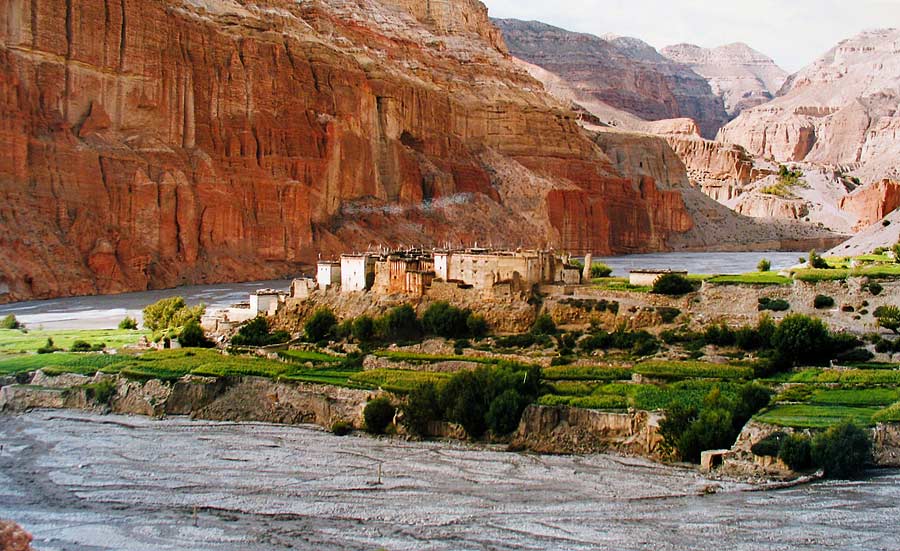You can contact us by e-mail or phone
from uk
01405 862917
outside uk
+44 1405 862917
01405 862917
+44 1405 862917
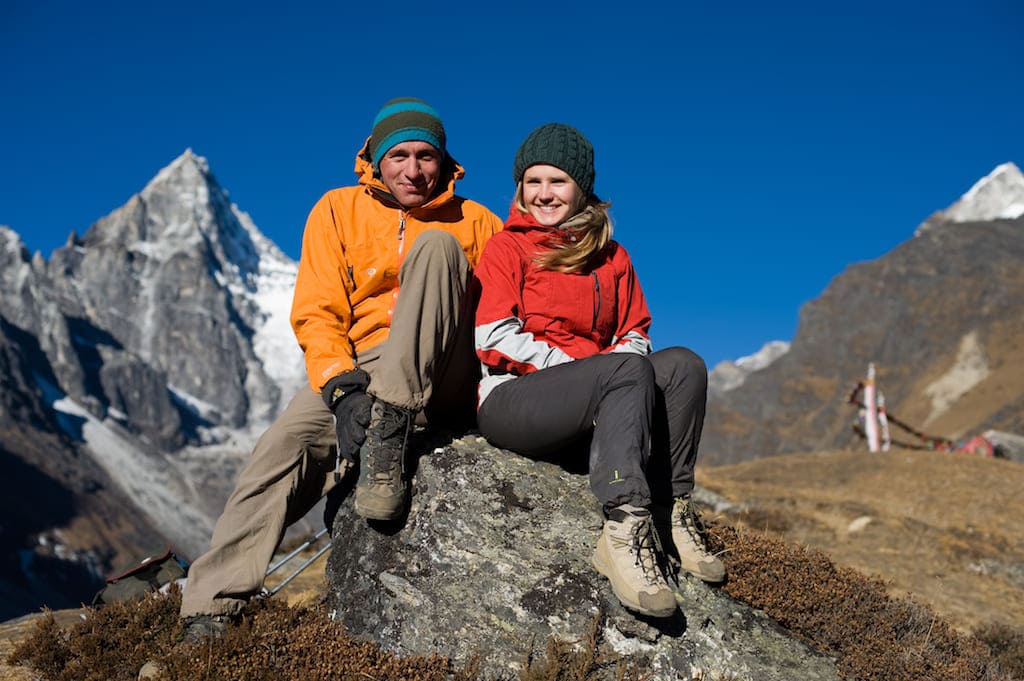
First Nepal Trek - What you need to know
Snow Cat Travel - A UK registered trade mark
Before deciding on your first trek in Nepal you should read this. It contains lots of useful advice and information for anyone thinking about their first Nepal trek. If you've never been trekking in Nepal and the Himalayas and have no previous trekking experience you need to be fully prepared and informed.
Whether you're going on a first time Nepal trek or are a regular Himalayan trekker there's more choice than ever for trekking in Nepal.
There are of course all the Classic Himalayan Treks. There are many short treks too.
Nowadays there are even a couple of Luxury Treks.
Choosing what's right for you is important.
We think that for anyone thinking about their first trek in Nepal there's a lot you need to know!
So, here's our "kitchen sink" guide to everything you need to know before deciding on your first Nepal trek.
Topics covered include:
Fitness Levels and Experience
Hiking boots for a trek
Your health
Altitude
Clothing and Equipment needed for a trek
Porterage on Trek
Trekking Guides
Accommodation on a trek
Why you should think about contingency
Being insured to go trekking and helicopter rescue
Trekking Permits
Flying into the Himalayas to start a trek
Trekking safely
Respecting the local culture
When to trek, food on trek, water and more....
Trekking on the Manaslu Circuit Trek
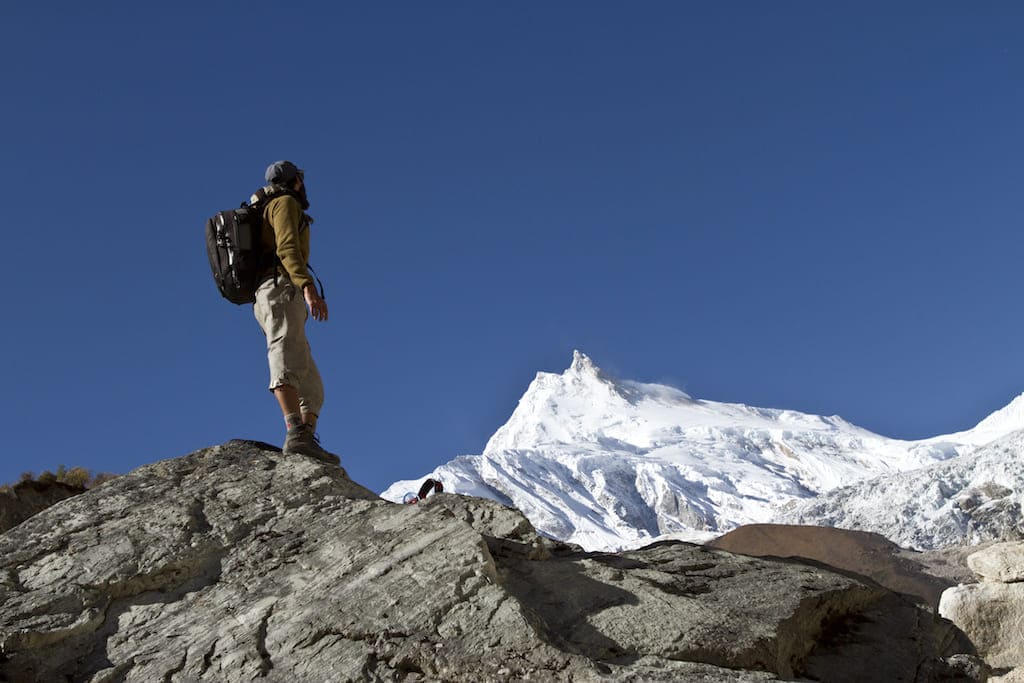
The common sense principle of 'don't bite off more than you can chew' is particularly applicable to lengthy, challenging, and high-altitude trekking, as well as short treks too.
Just because a trek might be short in duration e.g. a few days, that doesn't mean the trekking is easy.
The very popular Poon Hill Trek is a good example. "Hey.....it's only 5 days of trekking, so it can't be that tough, right?
Wrong!
When was the last time you walked for five days consecutively up and down a 3,000m mountain?
There are in fact there are two days of stiff and tough ascent and the descent is steep too.
We appreciate that some people do wish to challenge themselves on their trekking adventure, and others prefer to be within their known comfort and capability zones, it is crucial that you choose a trek that is not beyond your capabilities. The consequences of finding out that the trek you've started is beyond your capabilities has the potential to be catastrophic and, most probably, very costly financially for you. We suggest respectfully that the Himalayas are not the place to find out that the trek you've chosen is too difficult for you.
So, please be honest with yourself as to your health, fitness, and experience before choosing your Nepal hiking adventure. If you don't like hiking, then trekking is not for you.
Some treks, particularly Everest Base Camp attract many people whom would not usually go hiking and due to inexperience seriously underestimate the challenge and the realities of trekking for many days at relentlessly high altitudes.
Possibly the most popular base camp trek in Nepal and a magnet for first time trekkers nowadays is Annapurna Sanctuary and for this trek we're becoming increasingly alarmed at the trend with some trekking agencies to try and get up to Annapurna Base Camp (over 4,000m) in a very short space of time, presumably to keep the costs down and we've seen this trek described as "easy"....no, it isn't!
In the Himalayas, there is no such thing as "easy"!
Easy, moderate, challenging, or very challenging are often used as wordage to describe/grade a trek. We find that providing daily walking distances can be very misleading, particularly for inexperienced trekkers. There's a very big difference between a 5-kilometre walk on level ground and a 5-kilometre walk that is all uphill and at high altitude. The trek to the Annapurna Sanctuary (where Annapurna Base Camp is located) is indicative of this. Each day's walk (distance-wise) isn't particularly far, but most days are either very steep uphill or downhill, as well as being at a high enough altitude to make them even harder.
It makes us very sad that inexperienced hikers are not aware of the risks involved in going to high altitude quickly and suffering as a result as there is no short cut to Annapurna Base Camp. So, the only way to make it "shorter" is to make the trekking days even longer and tougher, which makes the rate of ascent bewildering, especially when combining this with potential over exertion and consequent dehydration. If you don't know much about altitude, then do please read the altitude section further below.
Find out More - Getting Fit for a Nepal Trek
Trekking in Nepal isn't easy, but it's worth it!
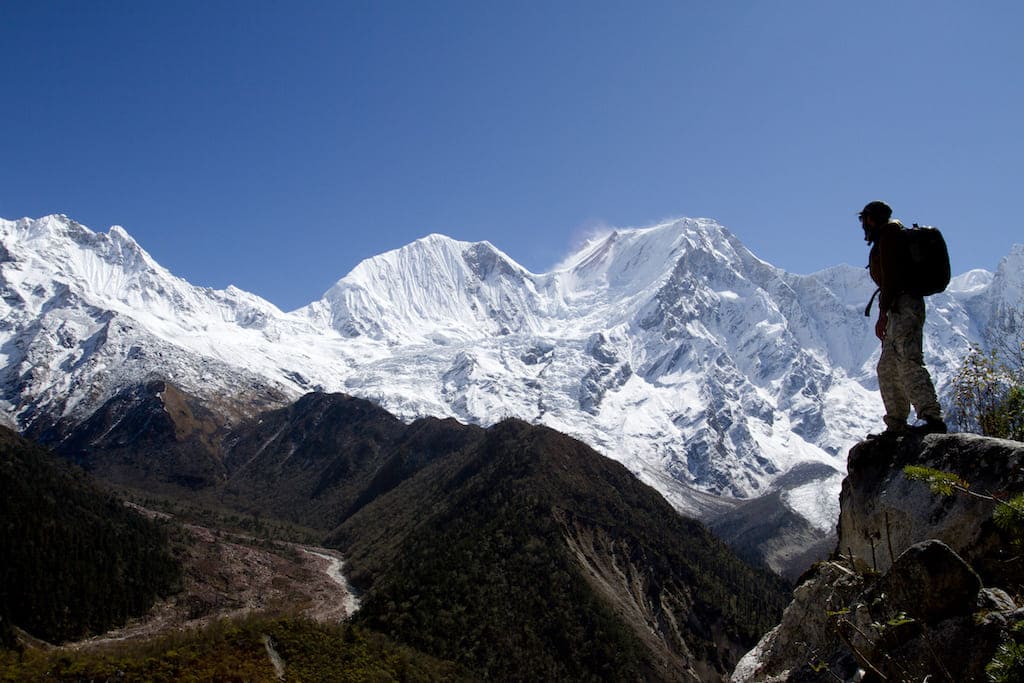
Hiking Boots for Trek
A trek by default is walking and "surprise, surprise" that walking won't be on beautifully manicured pavements.
Conditions under foot can vary considerably....from rough and stoney, slippery and muddy, snow, as well as boulder fields, loose scree and more. On some treks though the linking sections between villages can also be rough paved with stone.
Whatever the conditions underfoot on a Himalayan hike your feet are going to take some hammer and need proper protection too, so it makes good sense to pay special attention to selecting a sturdy, good quality, waterproof pair of hiking boots. Cheap, flimsy, porous hiking boots won't last very long and just aren't up to the job. Sneakers or lightweight trainers on a trek are neither use nor ornament other than for wearing in a trekking lodge at the end of each days hike.
Our Guide to Choosing Hiking Boots tells you everything you need to know about trek footwear.
Good hiking boots are essential on a trek
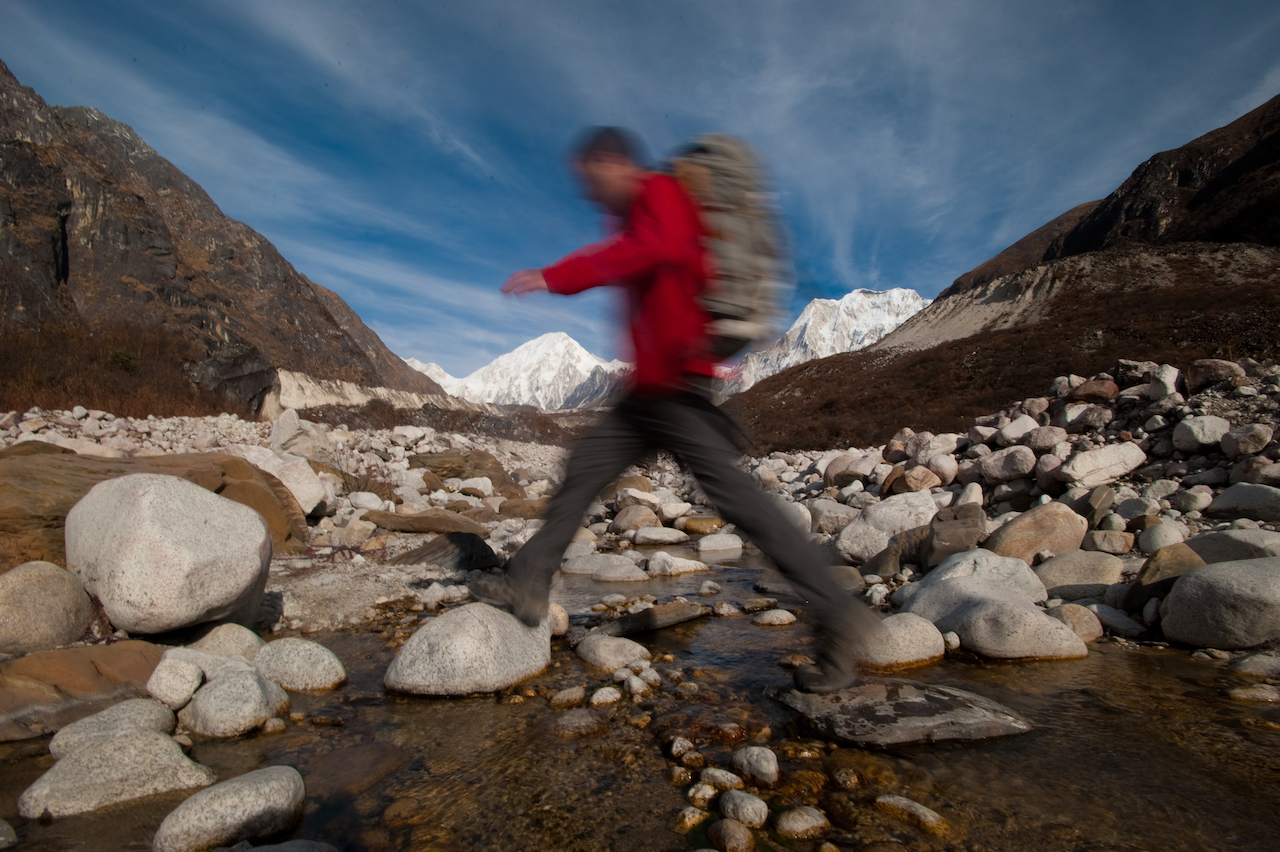
Your overall health
Not all of us enjoy perfect health and may already have some kind of medical condition. Please consider whether you or any of your party have a pre-existing medical condition, and if so, consult your or their doctor for further advice as to the suitability of a trek, especially if it involves higher altitudes.
High altitude and/or physical exertion does often expose underlying health conditions and not in a good way.
That is not to say that a physical disability would or should preclude you from considering a Himalayan trek. People with guts and determination with various disabilities have successfully reached and returned from Everest Base Camp in particular.
A remote Himalayan trek is not the place to make a pre-existing medical condition worse.
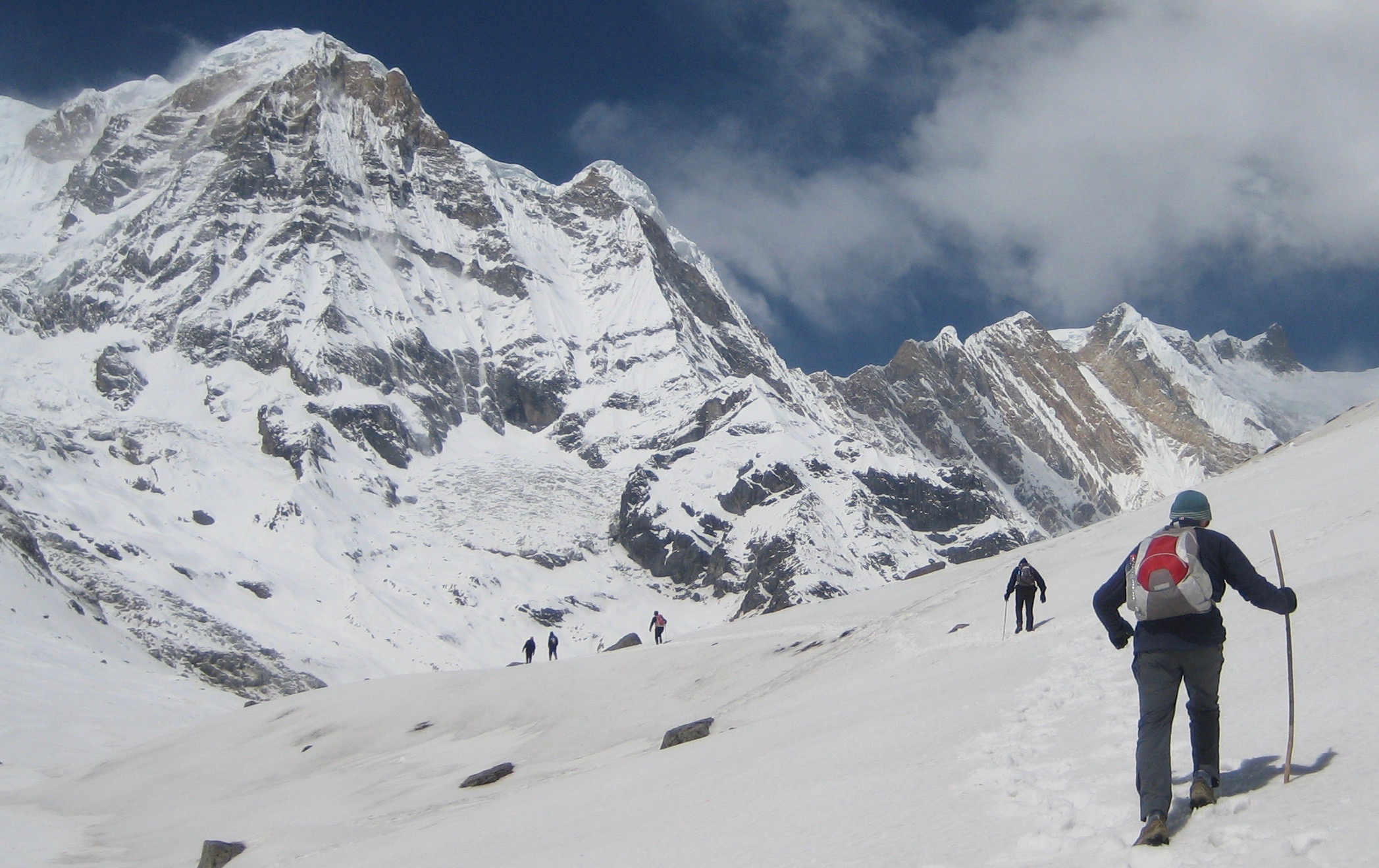
Altitude
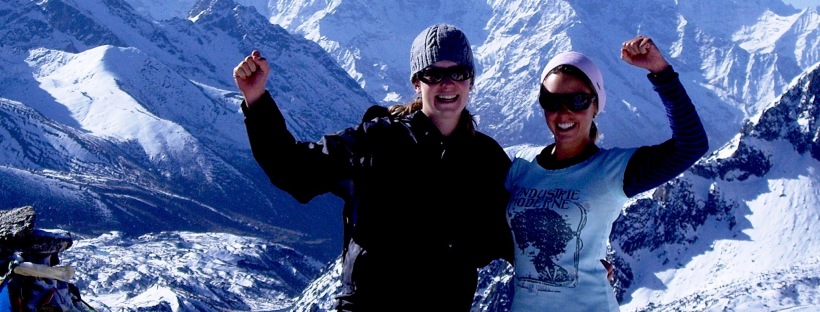
Clothing and Equipment on Trek
On a Nepal trek you're likely to encounter various weather conditions.
So, you need to be prepared clothing and equipment wise for pretty much, "anything and everything".
You name it.....wind, rain, cold, snow and even warm sunshine....on a trek you might experience the whole lot....in a day even!
A hike in the Himalayas is not a fashion show to look good in for Instagram. Function overrules fashion, because if your clothing lets you down then your first Nepal trek is going to be a miserable experience.
Our mantra is, "there's no such thing as bad weather, only bad clothing".
Be smart and don’t let being ill equipped and poorly prepared ruin what could be the greatest adventure of your life.
Here’s our guide as to what clothing and equipment you should have to enjoy a trek in Nepal to the max….
Clothing and Equipment for a Nepal Trek
It's always cold up at Everest Base Camp.....sometimes well below freezing
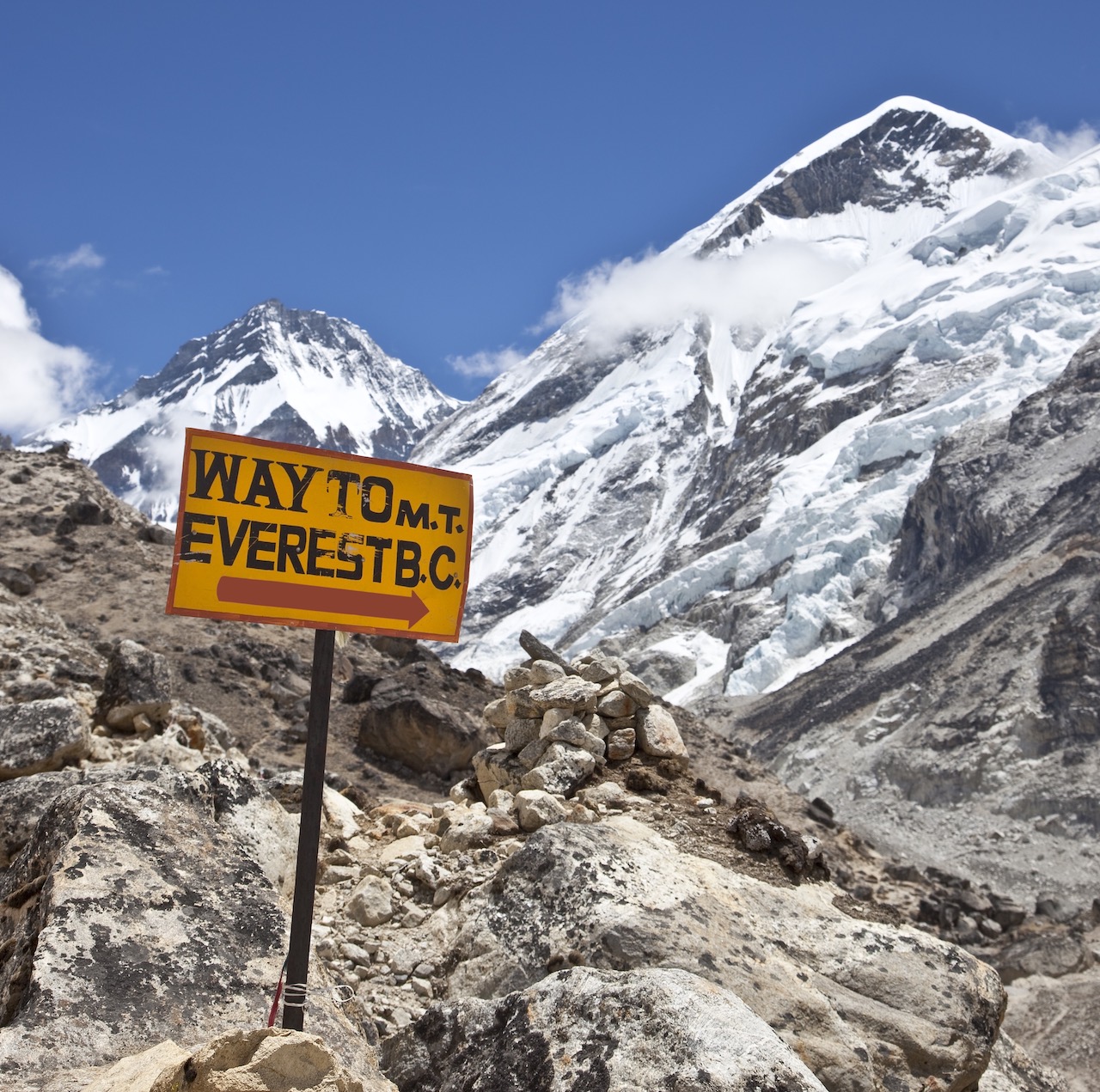
Why you should have a porter on a first Nepal trek
Actually on any trek booked with Snow Cat Travel we're pretty much insistent that as well as a guide (more on guides later) that you have the appropriate number of porters too.
Although of course we recognise that some people like to be "rough, tough, independent" types and want to carry all their gear themselves. Or to save some money.
With few exceptions our response is, "if you don't want porters, please book elsewhere".
This is all to do with safety on trek.
Firstly, if you're carrying all your gear yourself that additional weight you're carrying for many, many days is making a tough trek even tougher. That means the physical exertion on the body is much, much greater and that is often counter productive to the acclimatisation process. Finding out part way through a trek that the weight you're having to carry is too much and that you're struggling with the altitude then becomes a serious problem. Your problem....you can't expect your guide to carry your gear for you.
Secondly, if something goes wrong on a trek. A porter/s can be invaluable in assisting your guide deal with the problem.
A simple thing like a twisted ankle becomes much more difficult to manage without potential assistance. We can't just summons an Uber in the Himalayas to get you out. A twisted ankle isn't a life threatening emergency either so it's unlikely your travel insurance would cover the cost of a rescue helicopter (around $US 5,000).
But, with the assistance of a porter/s there are options the guide can use.
Simply put, a Himalayan trek involves risk and in our experience and opinion not having a porter isn't worth the risk.
Anyway, at the end of the day not many people are used to carrying heavy loads day in and day out in the Himalayas...but, porters are!
Being a porter in Nepal is a profession.....and a good one at that.
You will of course need to carry some things yourself on a trek. So, you'll need a good day pack to carry these things in and what you don't need with you during each trekking day....well, the porters take care of that for you....that's their job and they are very good at it too.
If this is your first Nepal trek you might not know how it works with porters and your main baggage.
Everything you need to know is covered in our About Daypacks and Porterage on Trek article.
A trek is much more enjoyable if you only have to carry a day pack
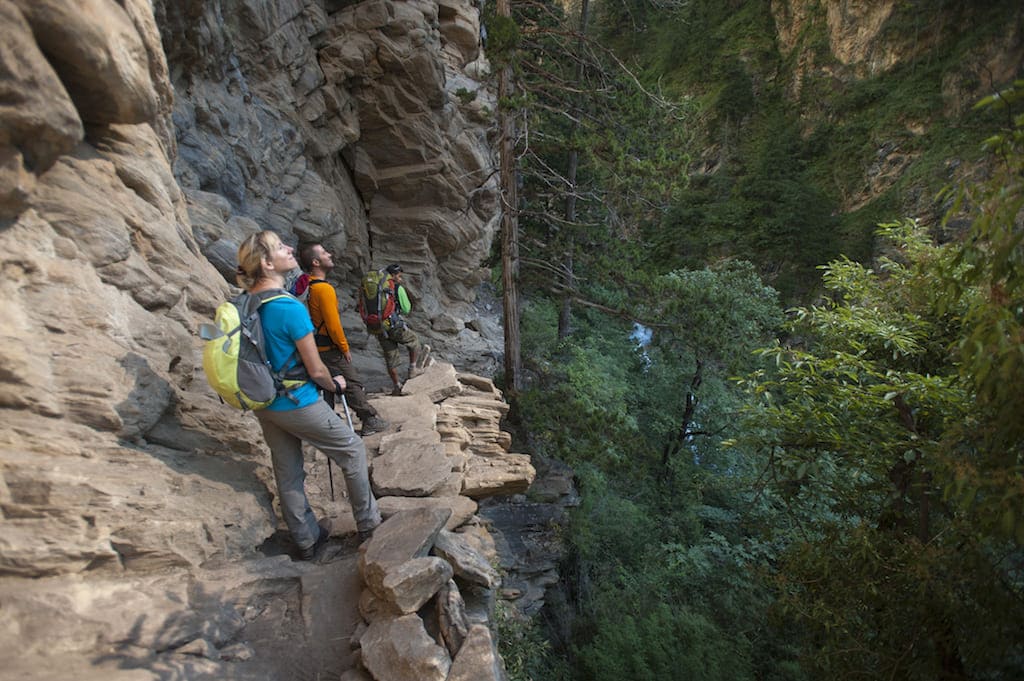
Trekking Guides
Needless to say that here at Snow Cat Travel whether you're a first time Nepal trekker or a seasoned Himalayan trekker you must have a trek guide if you want to trek with us.
The actual official rules regarding the use of guides for independent trekkers changed recently. But, as a licensed Nepal Trekking Agency these new rules don't really concern us as we wouldn't dream of not providing a trek guide, so to be honest we've not really looked at the rules for independent trekkers in detail.
When they were announced we did think they were poorly thought through and rather vague and for a first time trekker to Nepal might be both baffling and misleading. What is a Porter Guide? Don't ask us! We'd certainly not consider a porter capable of acting as a professional guide, especially when it comes to potential emergencies.
We also wondered when the new rules were announced, "just where are they going to get all these new trekking guides from"?
We know all too well you can't learn how to be a guide with a quick course in a class room.
Then again "it's Nepal" and if you walk down any street in the Thamel district of Kathmandu you could be forgiven for thinking that everyone you meet claims to be a guide and how would you know any different? Do you actually know what qualifications and official documentation a trekking guide in Nepal is supposed to have? And again, "it's Nepal", so is the guide's licence fake or real?
That's one of the problems with a country like Nepal where corruption is almost a national sport....what is genuine and what is fake?
What few flimsy regulations that exist aren't properly "policed". There are in fact countless unlicensed so-called trekking agencies in Nepal, so what sort of guides do you think they are going to provide? What sort of knowledge and experience do you think they are going to have? What sort of back up do they have if something goes wrong in the Himalayas?
Sadly many first time Nepal trekkers find out the hard way.
That aside, there's a lot more to being a professional trekking guide than being able to show trekkers the way.
Knowing what to do in an emergency, having knowledge and experience of first aid and in particular altitude is paramount.
More than that a good guide is someone whom is a mix of a walking encyclopaedia, great fun, helpful and very friendly.
That's why at Snow Cat Travel we train our guides ourselves, way above the "industry standard" for Nepal. We can say with absolute certainty (as our clients tell us so) that our guides are pretty much the best in the business.
To find out more, read our what It takes to become a Snow Cat Travel Guide in Nepal article.
Shiva Basnet, one of our most popular trekking guides
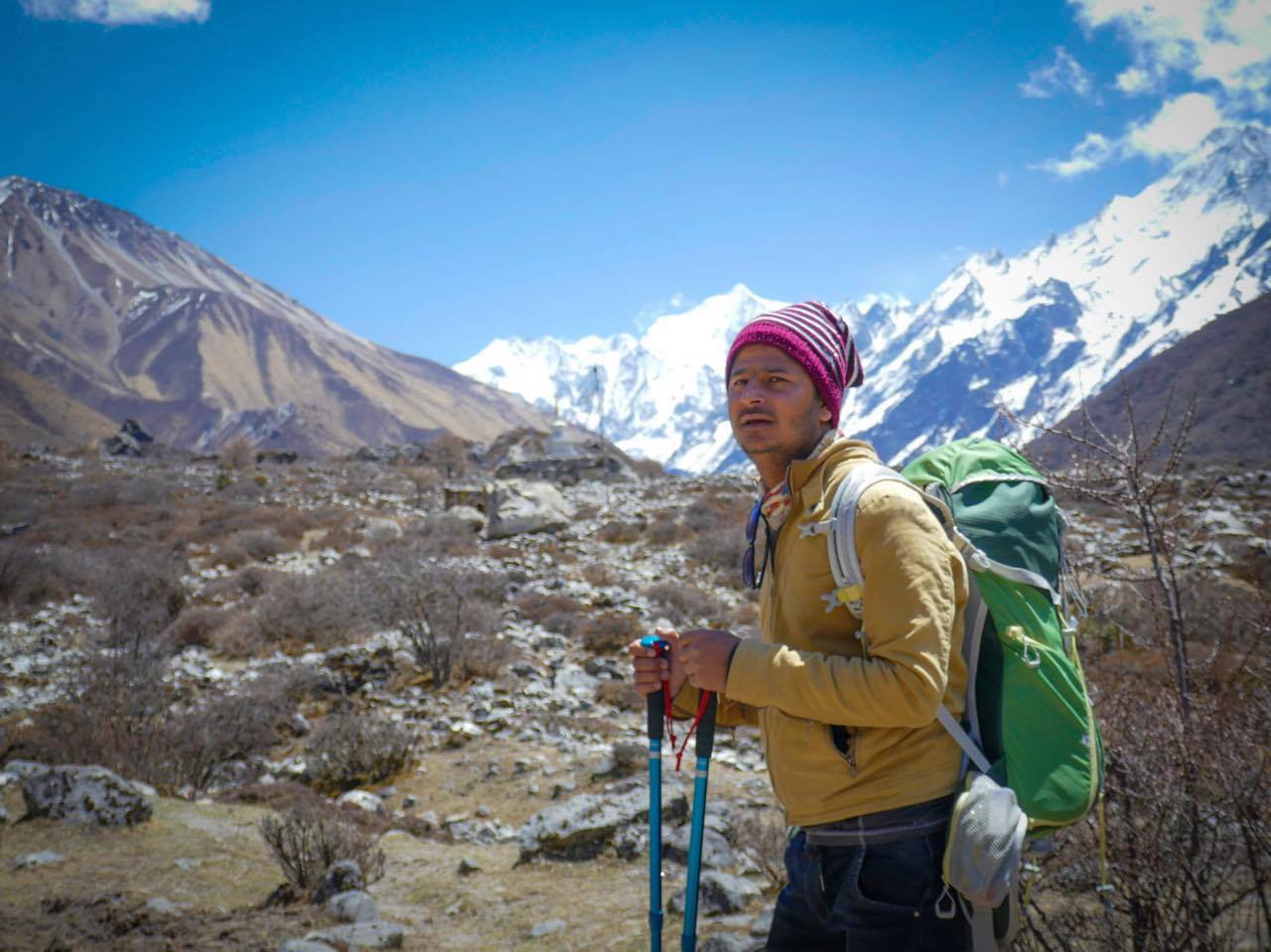
Accommodation on Trek
For a long time now the phrase "tea house trekking" has been synonymous with trekking in Nepal.
Yes, "once upon a time" they were indeed tea houses cum places to sleep for weary trekkers....and yes, they did indeed used to be rather grim.
But, things change and even on the more remote treks like Makalu Base Camp and Kangchenjunga camping (which is actually expensive) is no longer the default option.
On most treks in Nepal there is accommodation available throughout and it would be more appropriate to call these trekking lodges.
In fact there are so many of them in some regions like Everest, Annapurna and Langtang that some of the villages nowadays seem to be just a collection of trekking lodges.
These trekking lodges are usually "purpose built" and are invariably independently owned. Usually by a family.
There are even trekking lodges in the most remote and inaccessible places. The trekking lodges at Gorak Shep on the Everest Base Camp Trek might probably be the highest "hotels" in the world. At 5140m they are much higher than any permanent human settlement. Not, just in the Himalayas....the entire world!
The standards of trekking lodges does vary too. The general rule being the further you are away from a road/trail head the more basic they become. Hopefully that makes sense and you might just wonder "just how did these places so remote and high up ever get constructed at all"?
Staying in trekking lodges is a bit like staying in alpine mountain huts (and they vary too).
So, what are these trekking lodges actually like? Our Trekking Lodges page is the place to go to find out more.
Although limited (and we do mean limited) there are also a number of higher standard lodges. These are owned and operated by companies, not individual families. They are often referred to by western tour operators as Luxury Trekking Lodges, although in Nepal we call them Comfort Lodges. All the same, considering where they are, they are pretty amazing. But, a lot more expensive than a standard trekking lodge.
The trekking lodges at Gorak Shep, just a short hike from Everest Base Camp and right beneath the classic Everest view point of Kala Pattar.
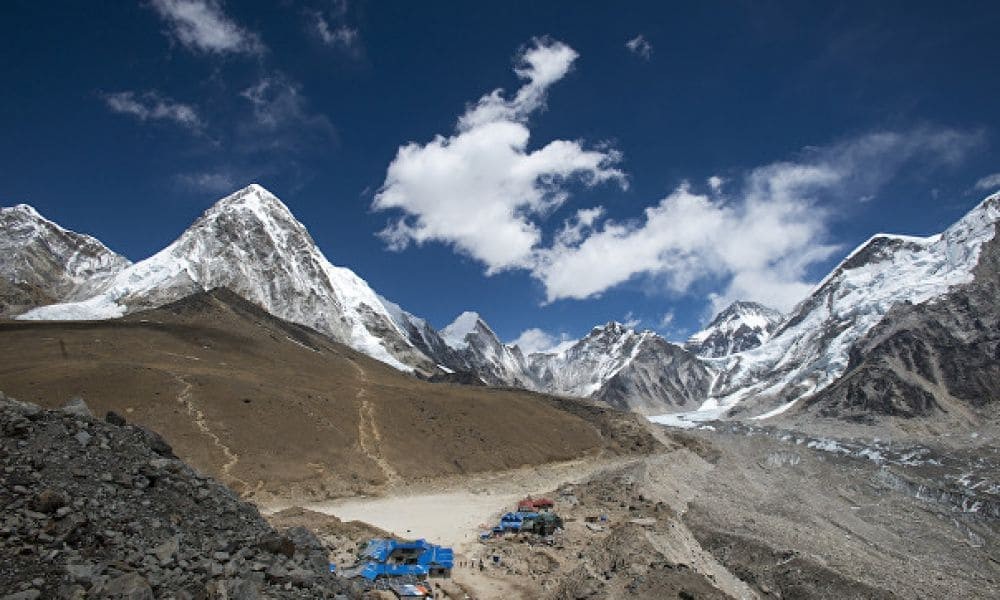
Contingency Planning
If you commute to work daily, then it's entirely possible that your journey doesn't always take the same amount of time.
Trains run late, traffic jams on the road cause delays and bad weather can cause travel chaos.
So, not surprisingly on a trek in the Himalayas expecting it go "like clockwork" is unrealistic.
First time Nepal trekkers often find out the hard way that they should have factored in some "what if it goes wrong" time into their plans.
Because the simple fact is that on a trek things can and do go wrong.....sometimes, not always.
This can mean having to abandon the planned trek as there's no longer enough time to complete it, or missing your flight home etc.
So, it's a good idea to factor in some contingency time.
Our About Contingency information should hopefully help you think twice about trying to achieve too much in too little time and what you can do about it.
Don't go trekking without being properly insured
Unfortunately there are no laws or regulations that say you must be insured to travel outside your own country. let alone go trekking in the Himalayas.
But, to do otherwise is just really, really stupid.
Here at Snow Cat Travel we just won't accept a booking if a client isn't adequately insured. Most responsible trekking agencies thankfully won't either.
Although the level of cover travel insurance provides you with varies and you might want to think about all the travel related matters in general you'd want to be covered for, if you're going trekking in the Himalayas you need to make sure that you're covered for that too.
In particular Helicopter Rescue. If an emergency arises on trek then a helicopter is usually the only way to evacuate you quickly.
But, as mentioned previously, helicopter rescue in Nepal is a business...it's not a "free mountain rescue service". Someone has to pay for the rescue, otherwise the fact is the helicopter will simply not come.
So, it's important to ensure that your travel insurance will cover you for this eventuality.
You also need to make sure that your travel insurance covers you for the highest altitude attained on your chosen trek.
In the "small print" of many more general travel insurance policies (usually cheaper than specialist adventure travel insurance) you'll find a mention of an "altitude ceiling". Often this is around 2500m. In other words if you went on a trek that reached 5,000+m (which many treks in Nepal do), or indeed any trek that goes above 2500m (which most treks in Nepal do), then your travel insurance would be void for anything that happened above 2500m. In other words you'd not be covered for helicopter rescue and you'd have to pay the cost (in advance) yourself. Having to quickly find and pay in excess of $US 5,000 whilst you're in the middle of an emergency situation at high altitude in the Himalayas.....well, it's potentially catastrophic.
And guess what? People do sometimes find themselves in this situation because they were either not insured at all, or not properly insured.
But, of course thousands of people do go trekking in Nepal so proper travel insurance for trekking above the limits of "general" travel insurance exists and has done for a long, long time.
To find out more about the protection we think you need (and that would be compulsory to trek with us) see About Travel Insurance
Be insured for helicopter rescue on a Nepal trek
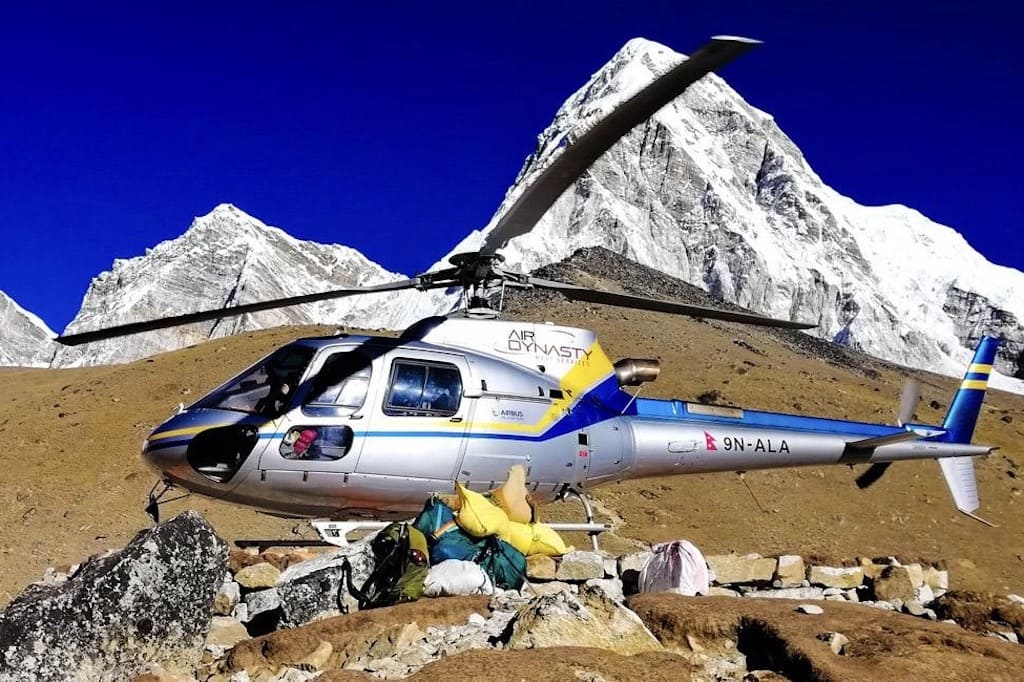
Trekking in Nepal will require a permit and T.I.M.S. registration, and most treks also involve National Park fees. The cost for trekking permits varies according to the region.
Permits for the Annapurna region, Everest, and Langtang are straightforward to obtain; however, many other parts of Nepal require a "restricted area" special permit. For example a permit to enter Upper Mustang is very expensive (around $US 500 for ten days and $US 50 per day for additional days).
Permits for trekking in restricted areas can usually only be obtained through a licensed trekking agency.
Most restricted area permits are issued on a minimum two persons basis. A solo trekker can therefore be expected to pay double the per person permit cost.
And these restricted area trekking permits can only be obtained from the Kathmandu permit office "in person". As such, the trekking agency will have to take your passport (hard copy—no scans) and passport-sized photo's at a time when the permit office is open. The permit office is closed on Friday afternoons, all day Saturday, and all Public Holidays.
Nepal has a lot of public holidays, so if you're considering trekking in areas other than Langtang, Annapurna, or Everest you may need to spend a couple of days in Kathmandu in order that your restricted area permit can be obtained.
To trek in Dolpo you need a restricted area permit, which costs around $US 530.
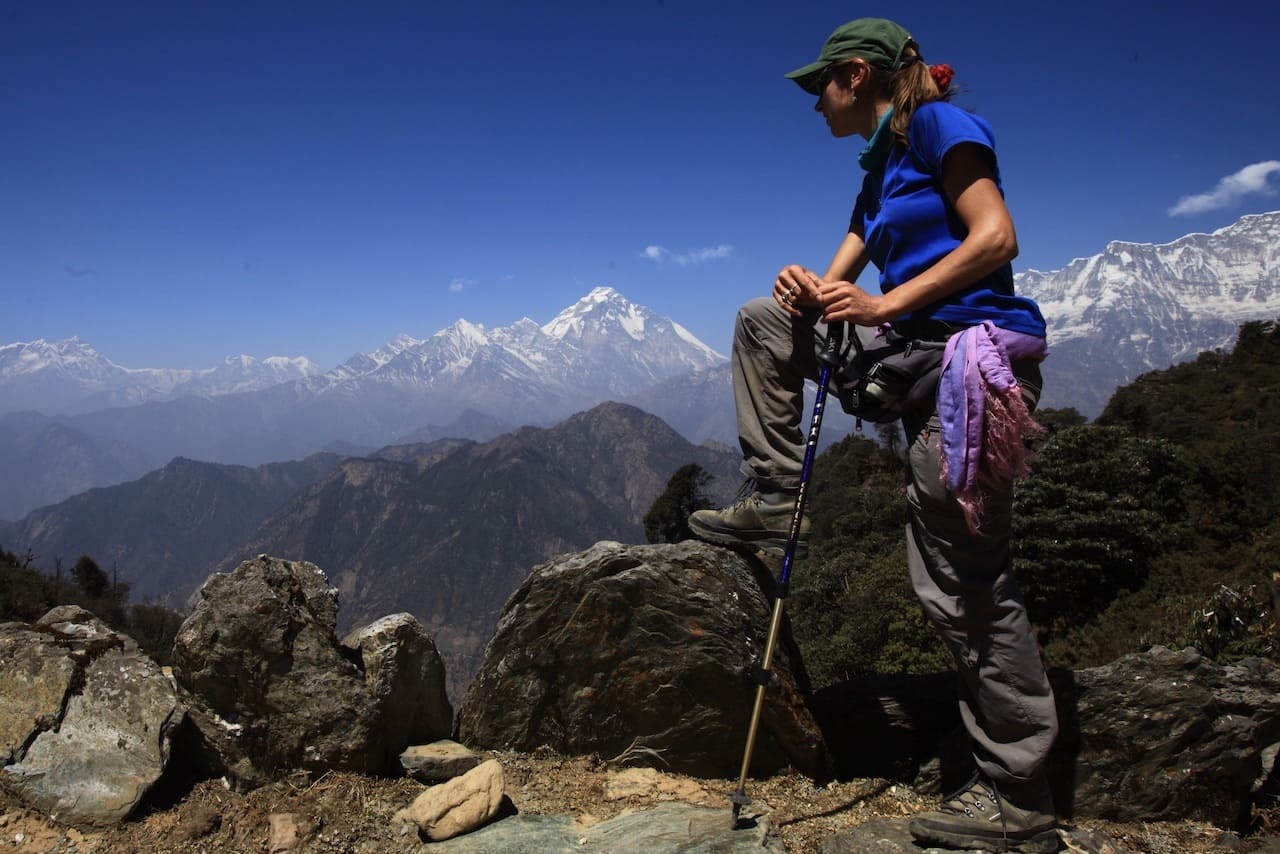
Internal flights in Nepal
To start/end some treks in Nepal you often need to take an internal flight into the mountains.
Everest Treks are probably the best known in this respect and these are done by "STOL" aircraft.
It's fair to say that anyone whom has flown into or out of Lukla would describe either take off or landing on this short, precipitously located runway as "exhilarating" or "terrifying". It's the same for many of the other mountain airstrips like Juphal etc.
Being in what feels like a very tiny plane with giant mountains all around and then attempting to land (or take off) from an unfeasibly short runway on what looks the top of a cliff edge is a "heart in the mouth" moment that you probably won't forget.
It doesn't help that Nepal has a poor aviation safety record. There's no denying this.
These mountain flights are also weather dependent as well as "fly by sight", so if the weather is bad (i.e. strong winds) or visibility is poor, then these flights are usually cancelled. Another reason why contingency is important.
These mountain flights (not to be confused with flights to lowland airports like Pokhara) also have seemingly impossible to achieve baggage weight restrictions too.
5kg Hand Baggage and 10kg Hold Baggage
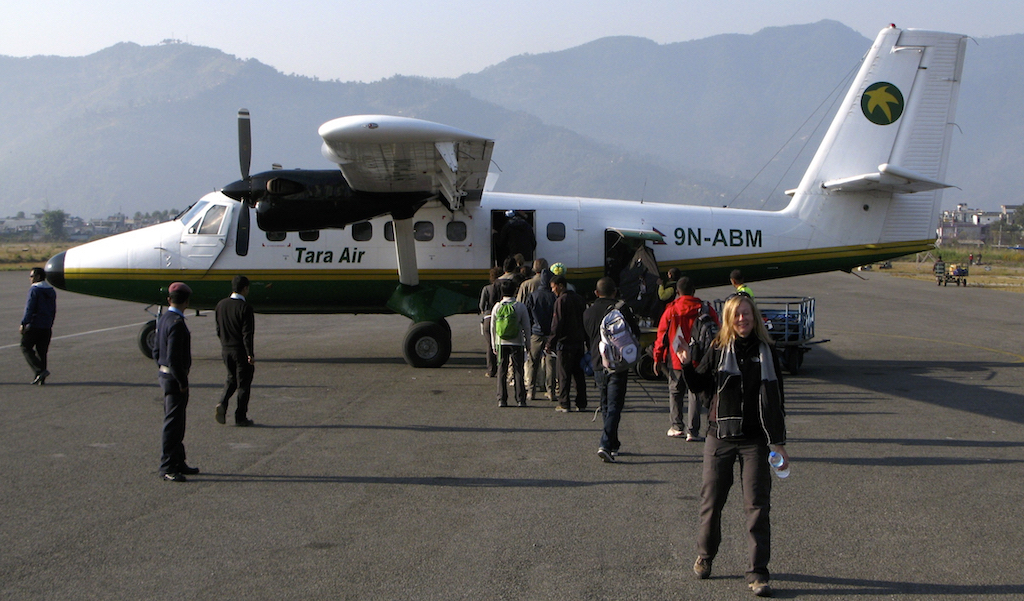
Safety on Trek
Whether it's your first Nepal trek or your umpteenth Himalayan adventure you do need to take a "trek safely" approach.
Most treks are trouble-free and pass without incident. However, you must also take responsibility for your own actions and should take greater care than usual while in Nepal and the Himalayas as something as simple as a turned ankle can be a major problem in remote areas. Do not take unnecessary risks and resist the temptation to switch entirely to "holiday head" mode. Sorry to sound as if we're preaching on this, but due to the difficulties that can arise when specialist medical assistance is far from immediately available, taking care of yourself is paramount. Please be mindful of the safety of others in your party, your support team, etc., and avoid putting others at risk.
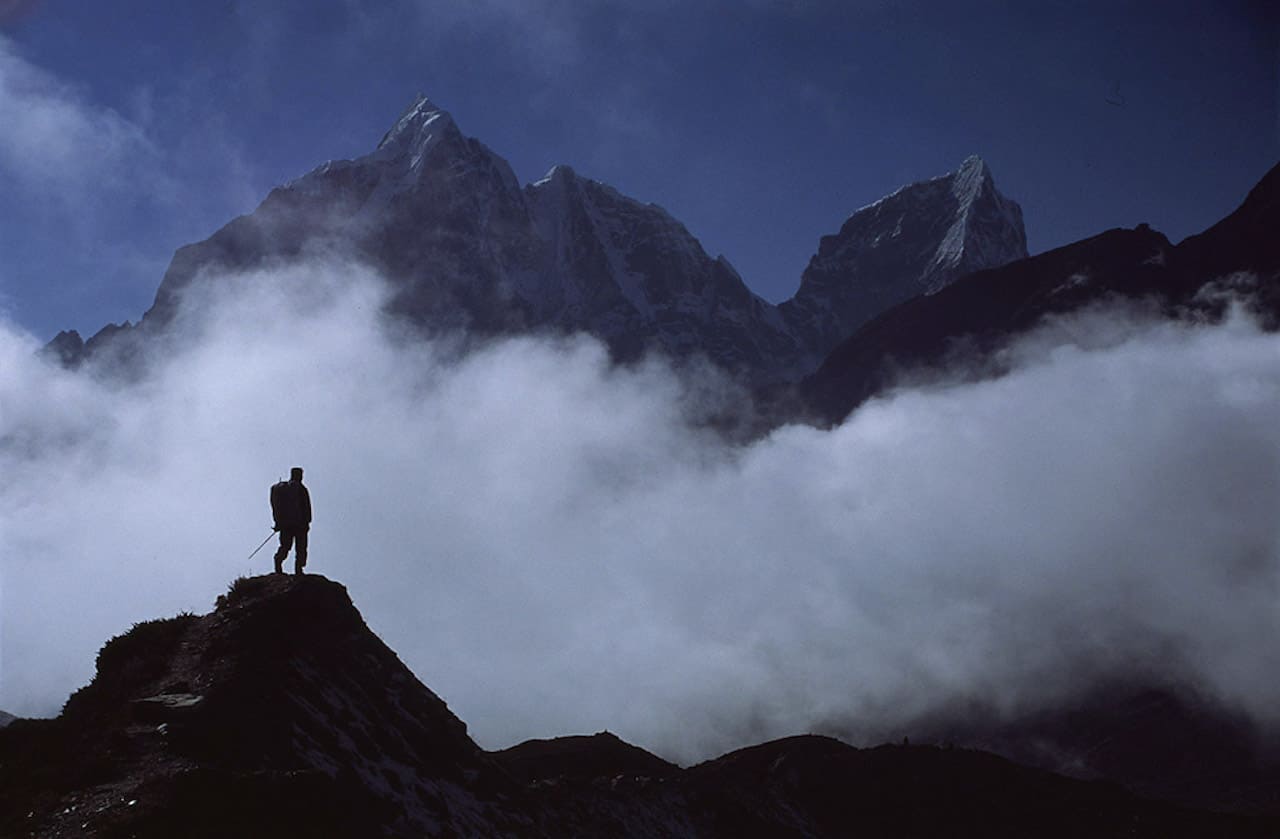
Respect the Culture of Nepal
It should go without saying really that respecting the customs and culture of wherever you travel is an absolute. Particularly on trekking holidays you may be walking into regions that rarely see foreigners. In all instances we would implore you to act both responsibly and respectfully towards the local inhabitants. In fact to do so is often the 'gateway' to those ad hoc cultural encounters many hope for. Often the locals are far too polite to show their disdain when foreigners behave (or dress) inappropriately. There are many great guide books about Nepal that provide detailed information on the culture and customs of Nepal, as well as what not to do! Acting responsibly and respectfully will help you get even more out of your holiday and if in doubt, just ask your guide for guidance, and just because you've seen some idiot from another party behaving in a manner contrary to the culture and what your guide books says doesn't make it OK to follow suit.
See our What to Wear in Nepal advice for more.
But, seriously do show respect to the people of Nepal and you'll quickly find you'll be treated with respect too.
"Don't come to Nepal to change it, come to Nepal to change yourself"
In rural Nepal many people are still very traditional and conservative
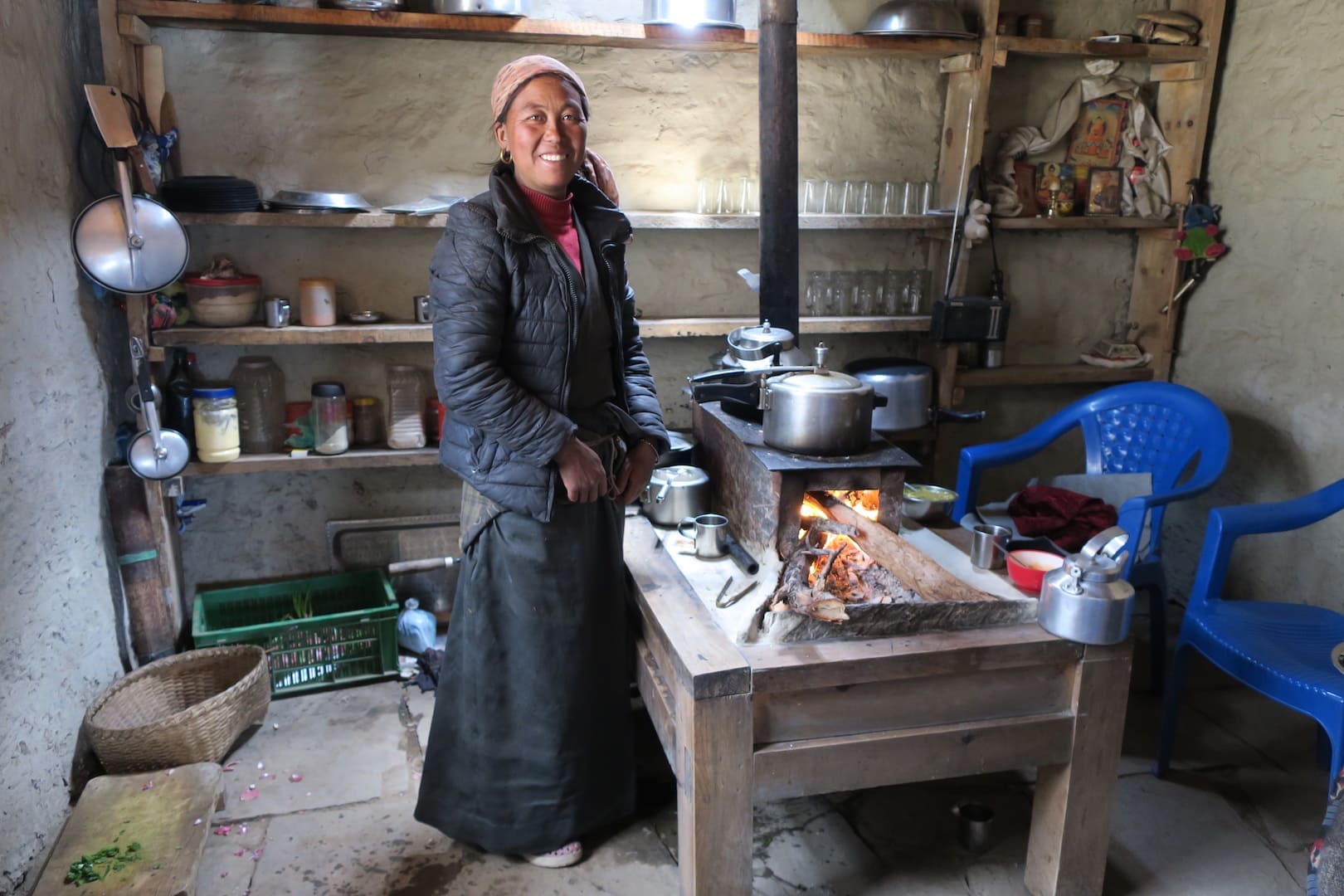
Other things to consider
One thing a first time trekker to Nepal might not be aware of is that by and large trekking in Nepal is seasonal.
We've not covered this in the above as you can find out more in our Best Time To Trek information.
In terms of general health matters there are no mandatory vaccinations required to enter Nepal. . So, we recommend you consult with your doctor as to the latest recommended vaccinations and other medical precautions. One common question that pops up is with regard to malaria, as it's not unreasonable to expect your doctor to not be wholly familiar with the geography. If you're going trekking only (i.e. not visiting the lowland Terai regions) then malaria is not a concern.
With regard to food and dietary requirements on trek vegetarians will have no difficulties. Nepal is mostly a Hindu country, so being vegetarian is the norm for the the locals. The Nepalese staple 'Dal Bhat' is entirely vegetarian (and very tasty too). No two Dal Bhats are the same! Carnivores won't be disappointed either. No beef usually. Instead there's buffalo and yak and chicken of course. In fact for both, you'll find the Nepalese are great cooks and as a general rule you will be able to enjoy a wide variety of meals, from local to international. In Kathmandu and Pokhara there's almost every type of eatery imaginable. Specific dietary requirements on a trek (beyond vegetarian) can be problematic in some instances due to the limited chain of food supply, particularly to the more remote trekking lodges. Our Trekking Lodges information indicates the typical foods available on a trek.
Tipping staff on trek really is an "it's up to you" thing. It's not compulsory, but it is of course welcome. But, our opinion is that any tip should be given on the basis that it has been earned and is therefore deserved. How much to tip is a question we're often asked and to all our clients we would provide general tipping guidelines. Tipping on a trek is a little hierarchical in so much as the amount given to a guide would usually be more than a tip given to a porter etc and would usually reflect the number of days of service.
To enter Nepal you'll also need a Nepal Visa. This is very easy to obtain. See our Nepal Visa Information for more.
If this is your first visit to Nepal our Nepal Country Facts can be very useful.
Drinking water on trek is rarely an issue. You'll find bottled mineral water readily available for purchase throughout most treks. Some treks also have safe water drinking stations where you can refill and trekking lodges can usually provide (and understand the need for) potable drinking water. Your trek guide should also be able to advise you where natural water is safe to drink and not. However, it's always a good idea to take along some water purifying tablets "just in case". Chances are you won't need to use them though.
One thing we've intentionally avoided in this FIRST NEPAL TREK article is suggesting a SUITABLE TREK FOR FIRST TIME TREKKERS TO NEPAL.
Sorry.....that's something you have to determine. People have different levels of fitness, varied amounts of time available, different attitudes to risk and adventure, different expectations and so on.
Yes, we're a Nepal Trekking Agency...of course we understand that a mix of words and enticing photo's make treks sound wonderful.....and that's because they are. We're a business, so attracting customers is part of what we do.
But, whether a Classic Nepal Trek or a Short Nepal Trek is best suited to yourself...you've really got to go beyond the enticing stuff and look at the "nitty gritty" of each individual trek. Look at each of the detailed itineraries....the facts will be there. How long each day of walking is, how much ascent and descent there might be, altitude gains, altitude losses, in fact how many walking days there are continuously.
That's the factual information you need to consider and ask yourself in all honesty, "am I capable of doing this"?
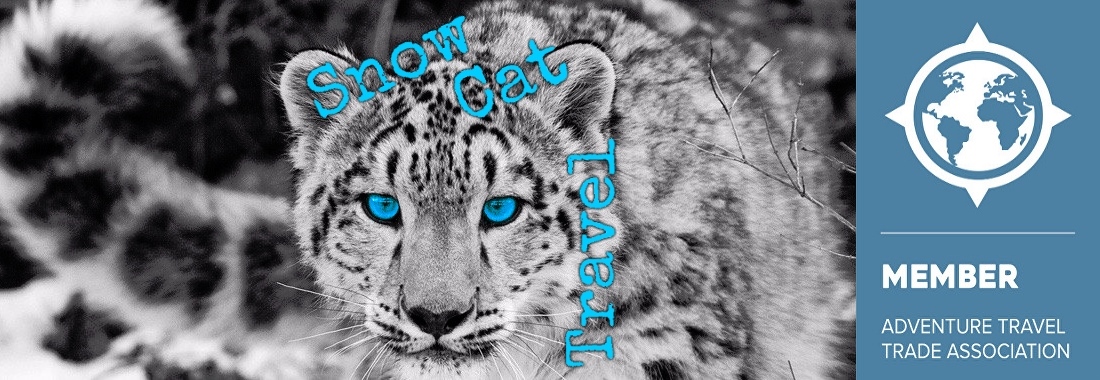

All rights reserved. Snow Cat Travel is a Registered Trade Mark UK 00003289264

